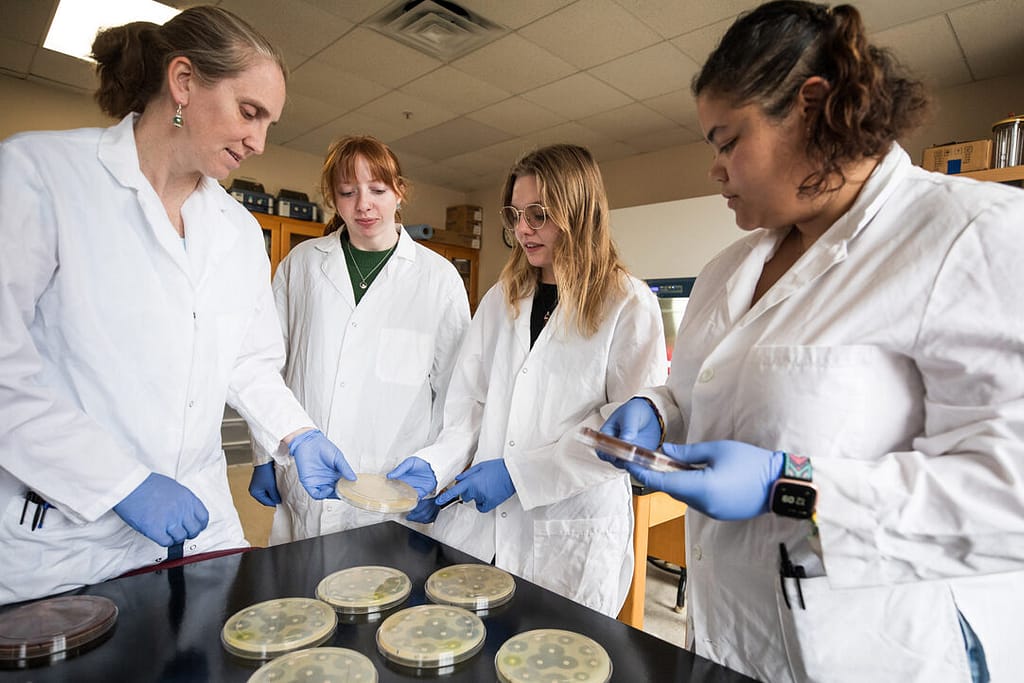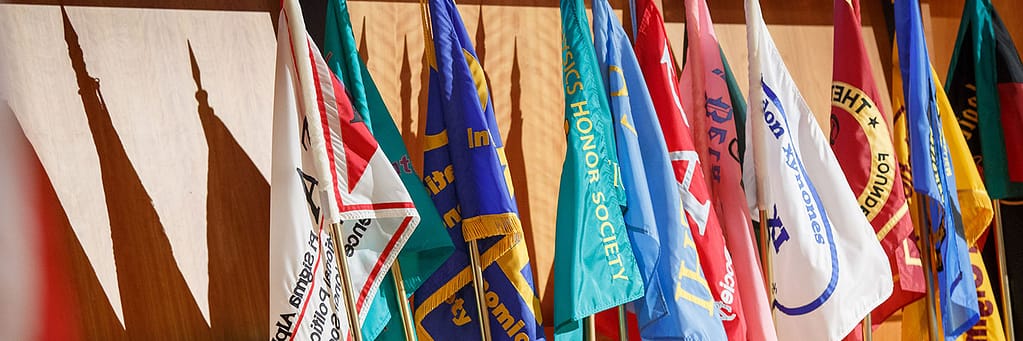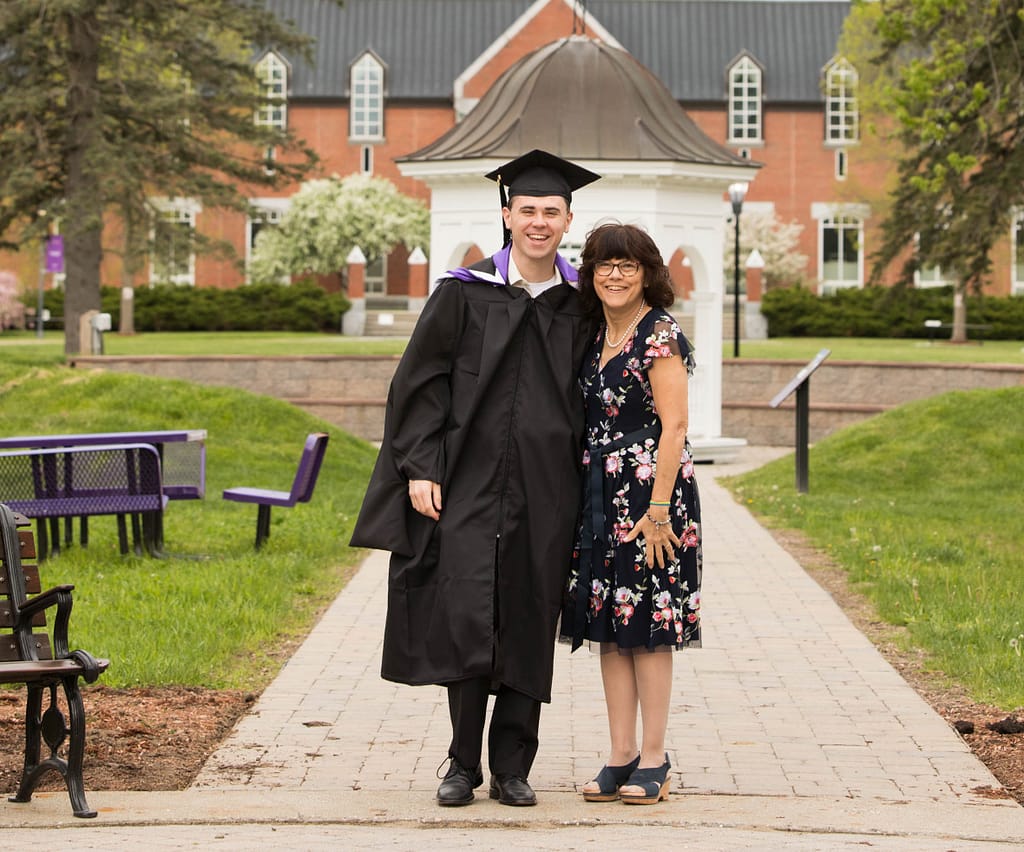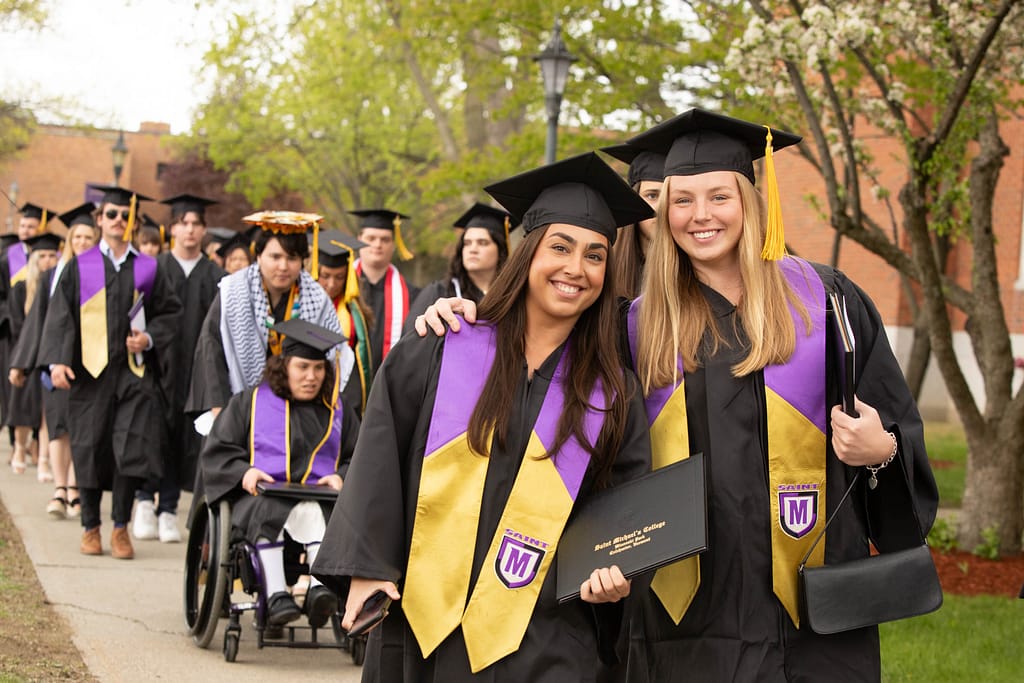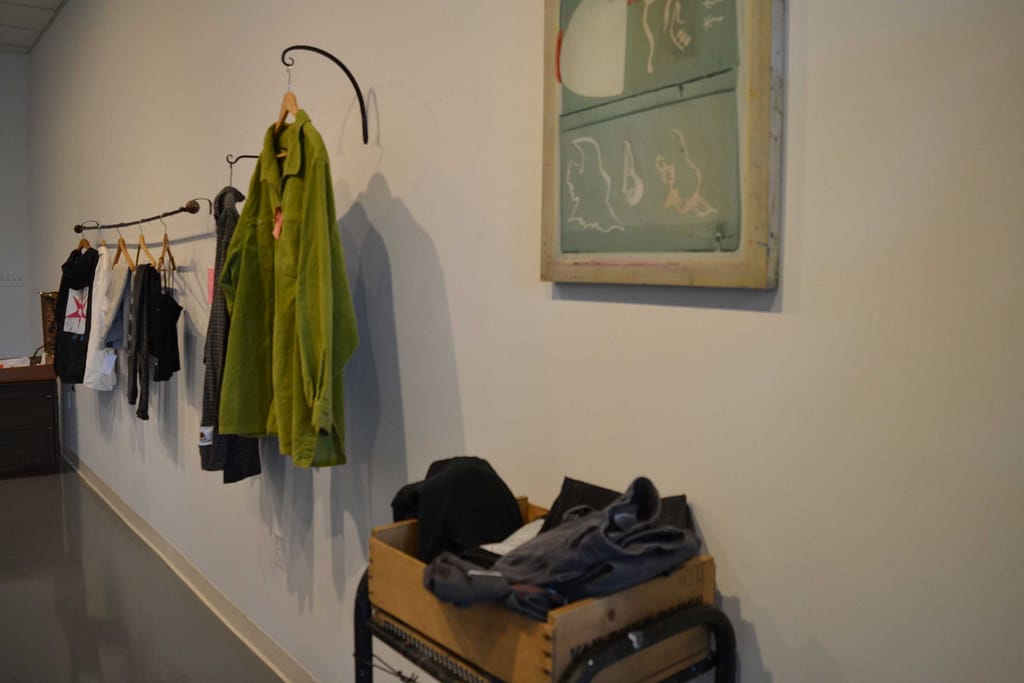Environmental Science students remove invasive species to get to the root of the problem
Students taking the Environmental Science 107 class at Saint Michael’s took an immersive trip into the Woodside Natural Area in Winooski this week to partner with the Winooski Valley Park District and help remove invasive species such as common buckthorn, honeysuckle and multiflora rose. The team of 16 students split into groups to upend the invasive species by the roots using tools like shovels, weed wrenches and saws.
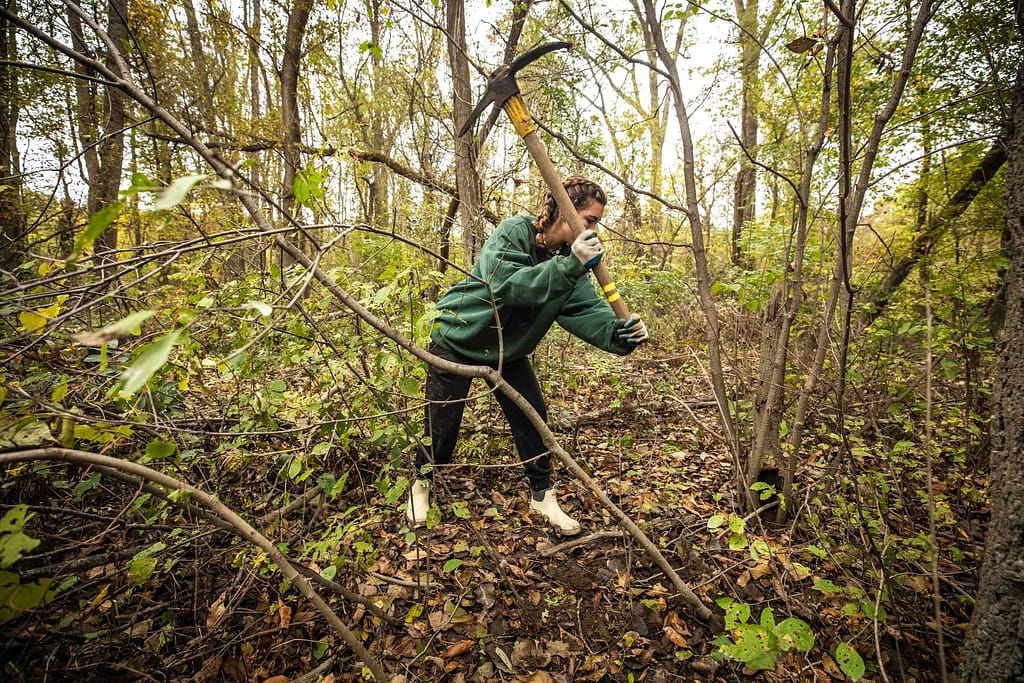
Lillian Wimler ’25 (Photo by Cat Cutillo)
Lillian Wimler ’25 wielded a pickaxe through the air and used her weight to wrestle the common buckthorn’s roots system straight from the ground. Wimler is an Environmental Studies major and said the hands-on experience has enriched her learning.
“I love it. I think it’s fun. It’s a lot better than being in the classroom,” Wimler said. “You’re actually out in the world experiencing and doing something for your community.”
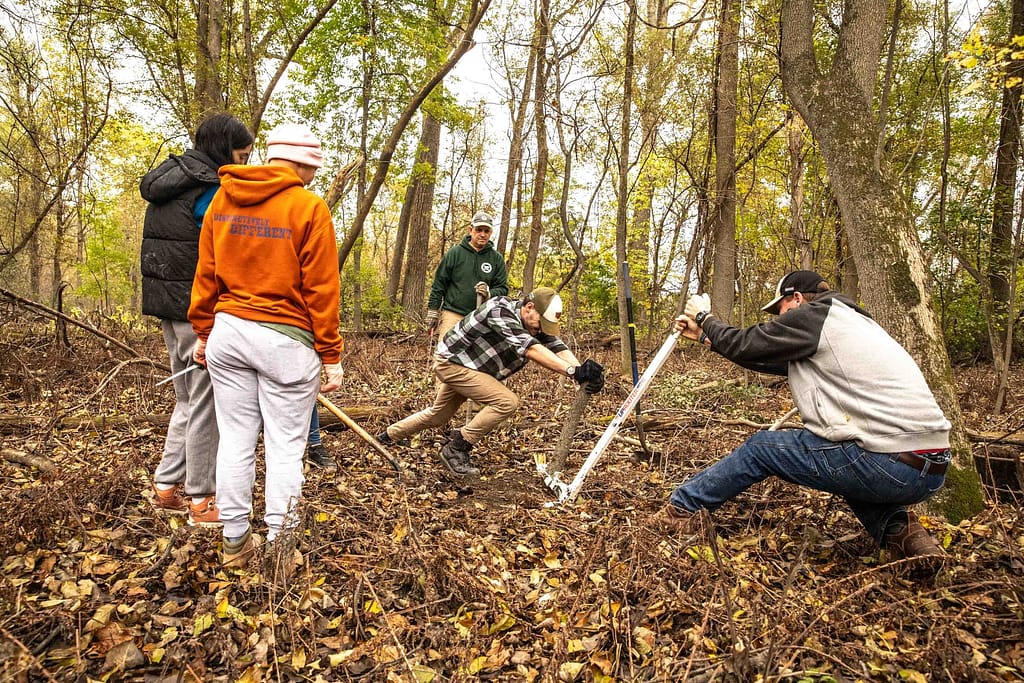
(Photo by Cat Cutillo)
The class will participate in a total of six different invasive species removals this fall at three different locations. In addition to visiting the Woodside Natural Area twice, they will also work on Saint Michael’s Natural Area twice, which abuts Woodside. In late October, the class will then head to Charlotte twice to partner with the Nature Conservancy and remove invasive species there by using a different herbicide method.
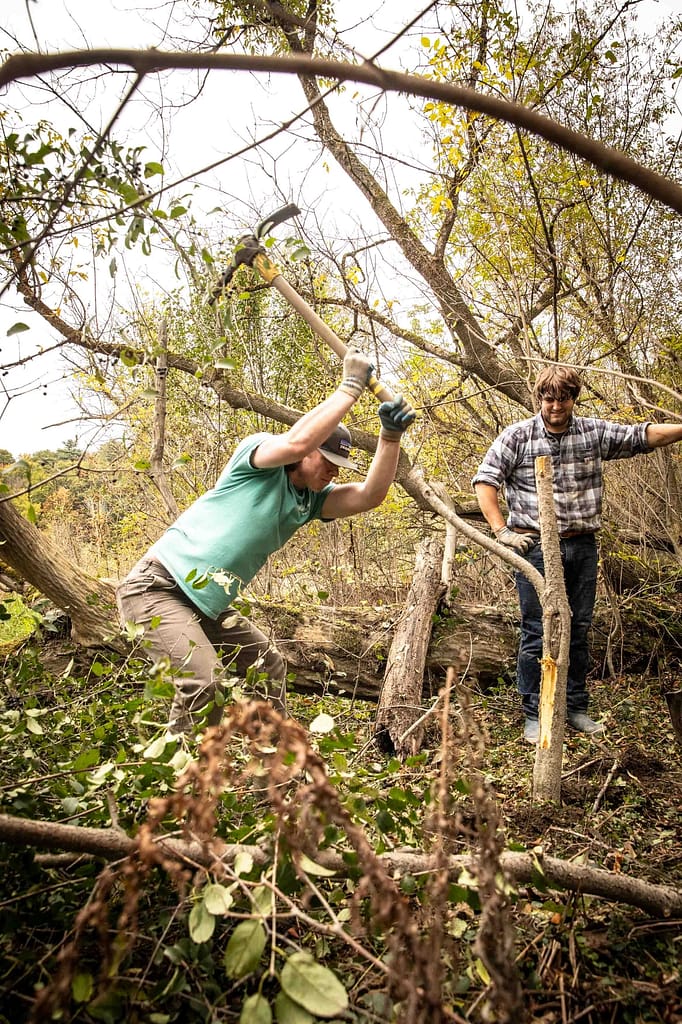
(Photo by Cat Cutillo)
Pretty but harmful
Clay Williams, the Assistant Professor of Environmental Studies and Science, is teaching the class and said these removals are exposing his students to different ways of controlling invasive species. Williams said the Woodside Natural Area is a “100 percent manual removal” that relies on the labor-intensive work of the students to remove the invasive species’ entire root system to fully kill the plant.
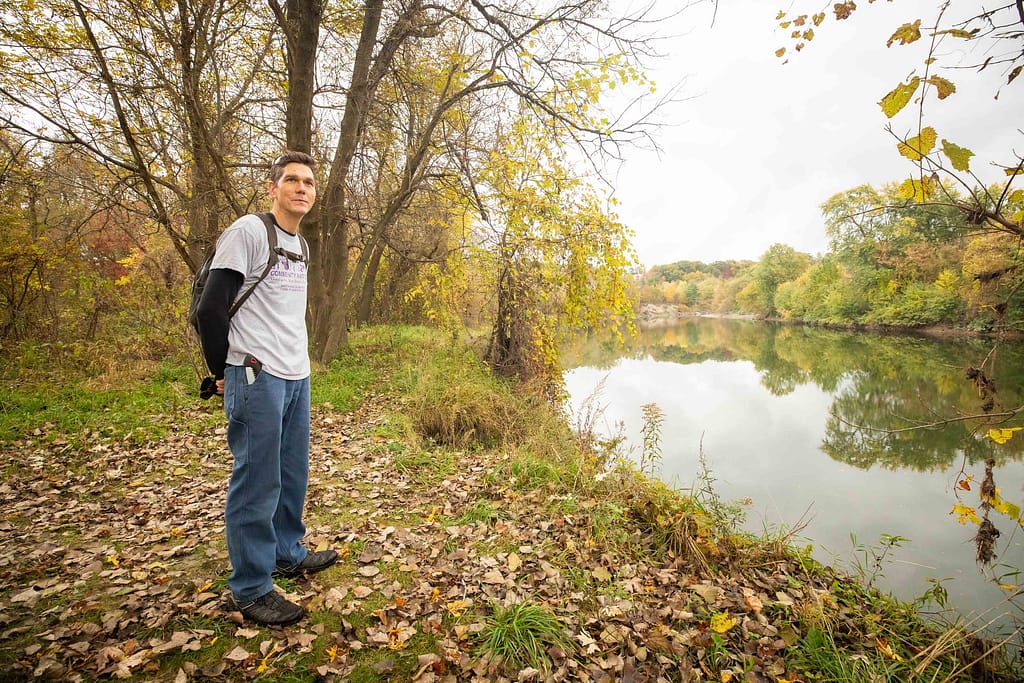
Professor Clay Williams (Photo by Cat Cutillo)
In Charlotte, the Nature Conservancy will show the group how to use a cut stump herbicide method instead. They will take a blade to cut the stump and then use an herbicide applicator—which resembles a deodorant roller—to brush herbicide onto the freshly cut stump.
“If you do it in the fall this time of year, the plant is actually sucking up nutrients and energy to go into stasis for the year. If you cut it now, it will pull that herbicide into its roots,” Williams explained, which will kill the plant.
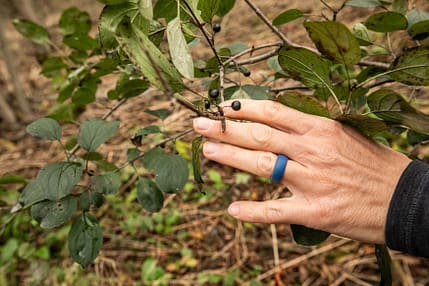
Common buckthorn with berries (Photo by Cat Cutillo)
Williams said invasive species start growing earlier than native species and they continue to grow long after native species have stopped for the season. Common buckthorn is widely used in the U.S. People often grow it between their neighbor’s lawn as a privacy screen because of its dense and durable nature. It produces lots of berries that aren’t nutritious and cause birds to have diarrhea, which results in the birds spreading the seeds rapidly as they fly.
Williams said that many of the invasive species seen in Vermont are plants from Europe that were transported here, planted deliberately, and spread. Honeysuckle and multiflora are other common examples of invasive species.
“They smell sweet and it’s a pretty plant. Many of the invasive species are aesthetically interesting plants,” Williams said, noting that several invasive species are easy to spot this time of year because they keep their leaves longer than native plants each season. “If you look around in late November, what’s green is the buckthorn.”
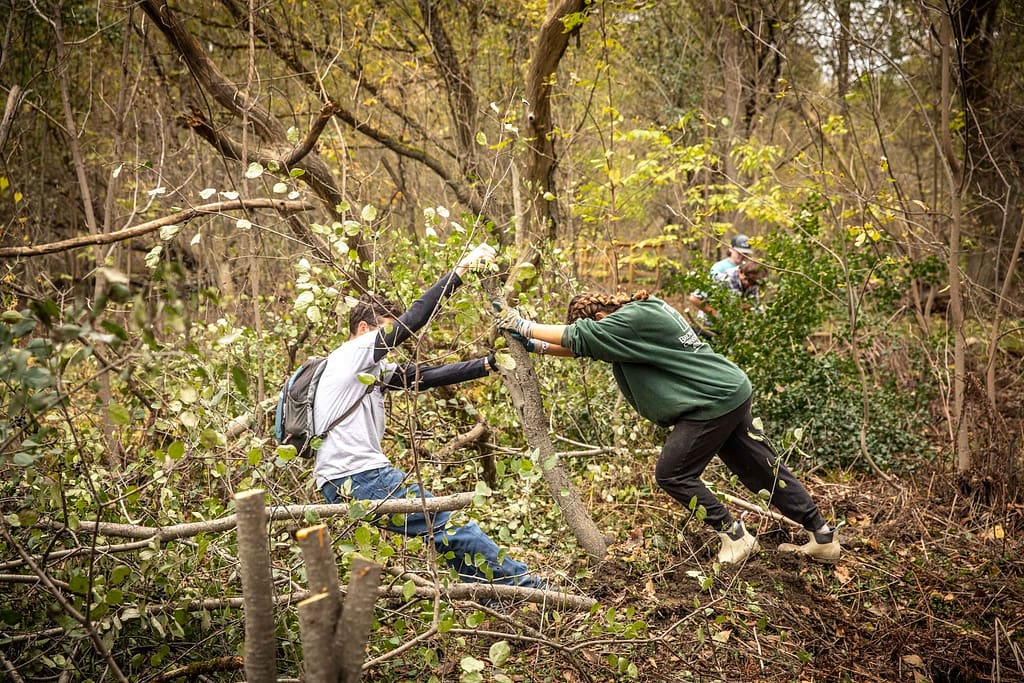
Wimler and Williams use their weight to remove the invasive species. (Photo by Cat Cutillo)
A clear impact
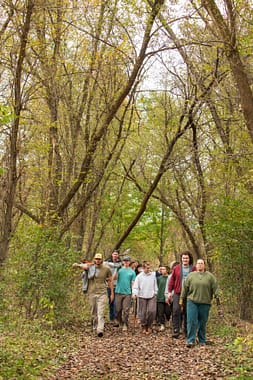
(Photo by Cat Cutillo)
This is the third consecutive year Williams has brought students to the Woodside Natural Area to remove invasive species. The impact the students have had is clear. Their efforts have opened up several hundred yards more of trail that the group can use to travel further into the natural area.
Steven Blaisdell, an employee for the Winooski Valley Park District, has been one of the people taking the Saint Michael’s team out for the past three years. Blaisdell said Saint Michael’s gets a lot of work done because “they’re always large teams and they’re always interested.”
Blaisdell explained that invasive species push out the native species because they grow more vigorously and have no predators. Common buckthorn is a mid-story species that typically grows to 20 feet in height but can even reach 30 to 40 feet. Tim Larned, Parks Superintendent for Winooski Valley Park District, used a chainsaw to cut down the larger common buckthorn that couldn’t be extracted by hand that day.
“If you don’t get the root system it will resprout and just grow right back,” Blaisdell said. “One of the characteristics of these invasive species is they regrow incredibly vigorously. You can cut them and that’s good, but if you pull the root system, they’re dead.”
Blaisdell credited Saint Michael’s students for clearing at least 75 percent of the invasive species that have been pulled out over the past three years.
“The way they’re doing the work is not haphazard. It’s calculated and systematic, and they’re making a permanent change in this landscape,” said Blaisdell.
He added, “We’re not just messing around here. We’re actually productively changing this landscape to give native species a chance to reestablish which makes the ecosystem richer and it increases biodiversity. That’s a big deal.”
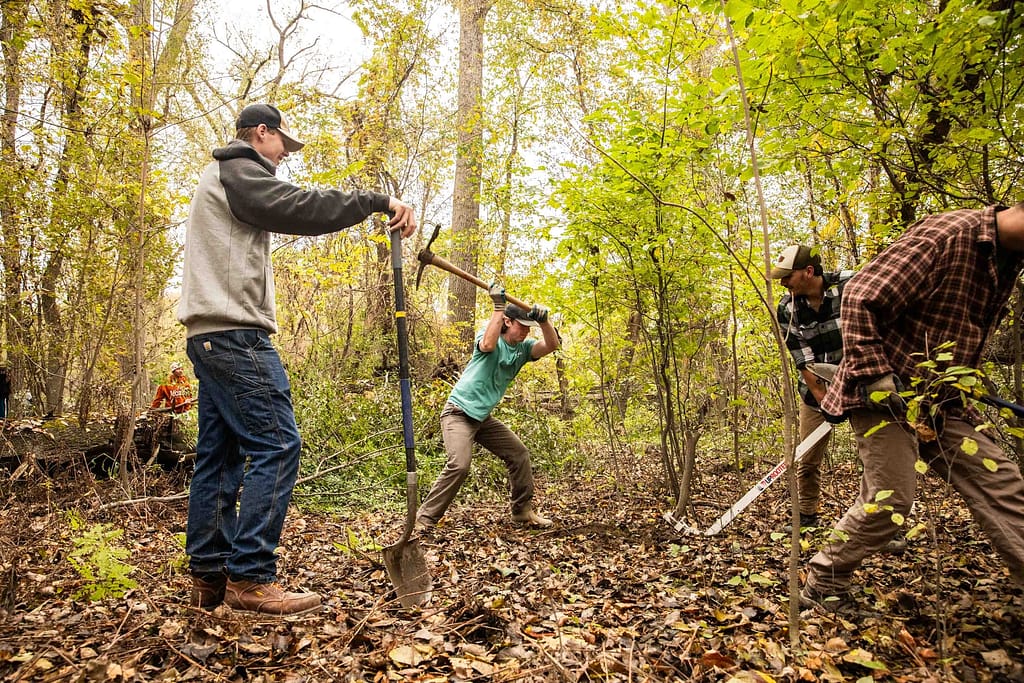
(Photo by Cat Cutillo)
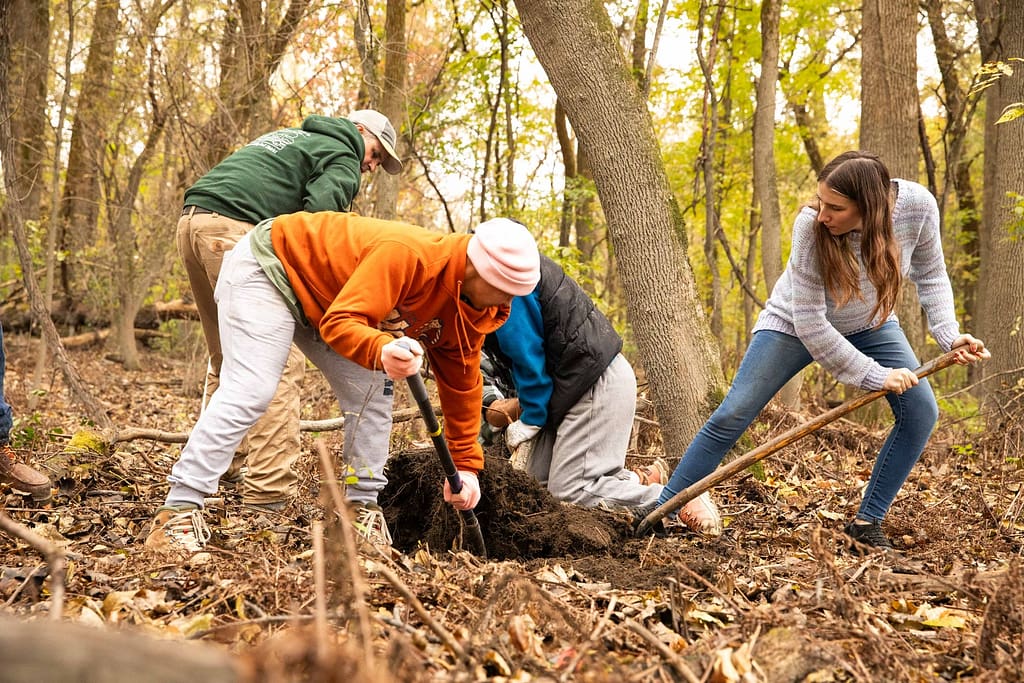
(Photo by Cat Cutillo)
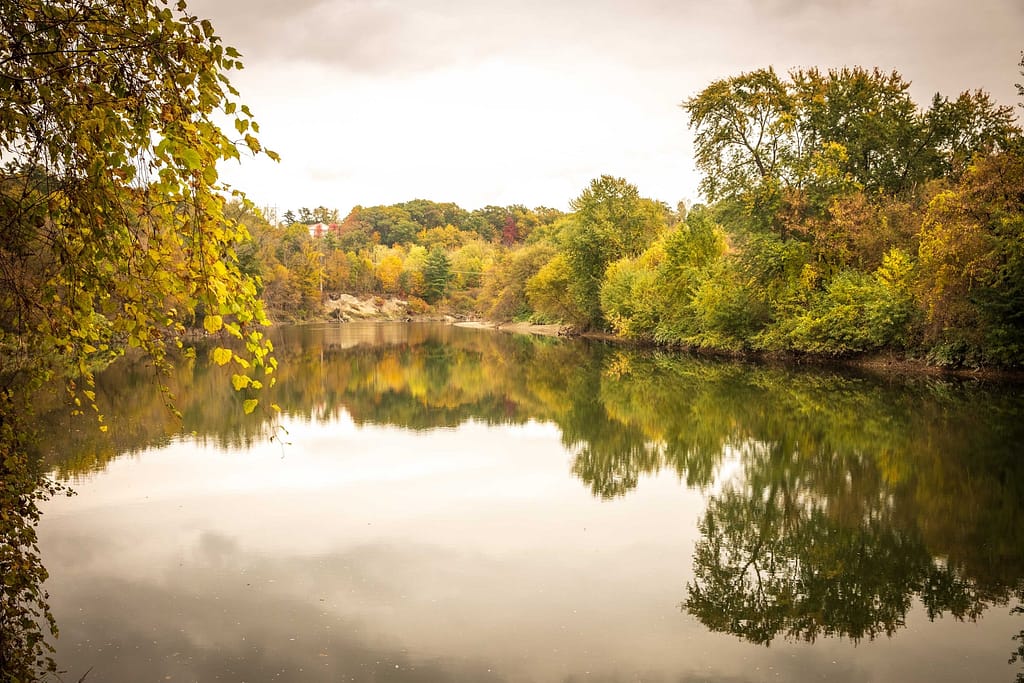
The Woodside Natural Area is on the Winooski River (Photo by Cat Cutillo)
The way they’re doing the work is not haphazard. It’s calculated and systematic, and they’re making a permanent change in this landscape.
